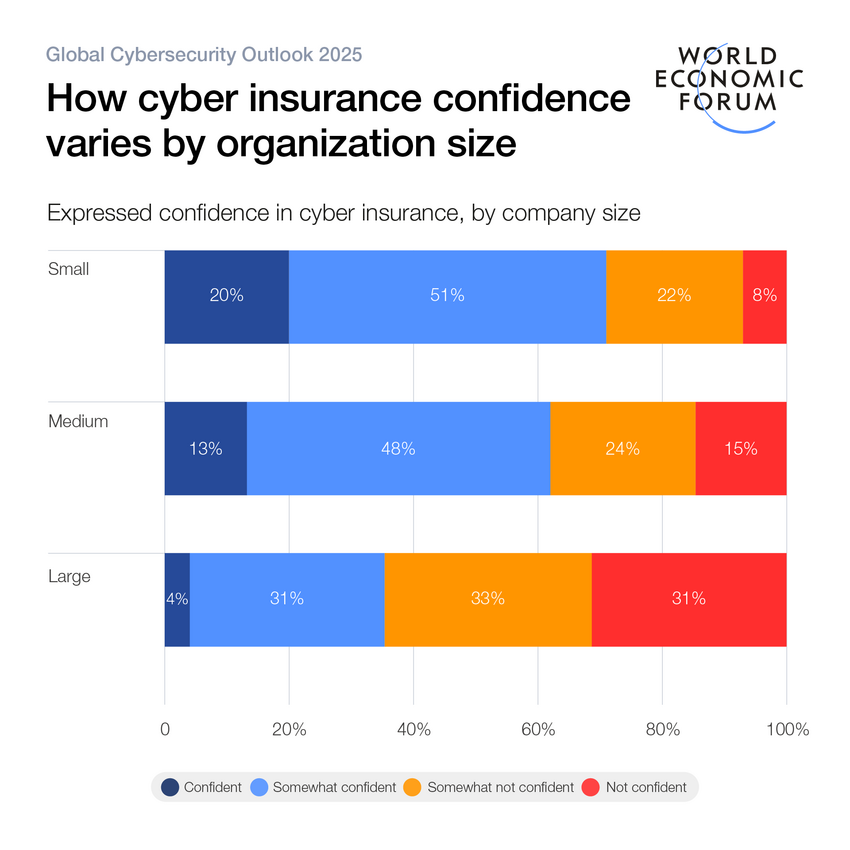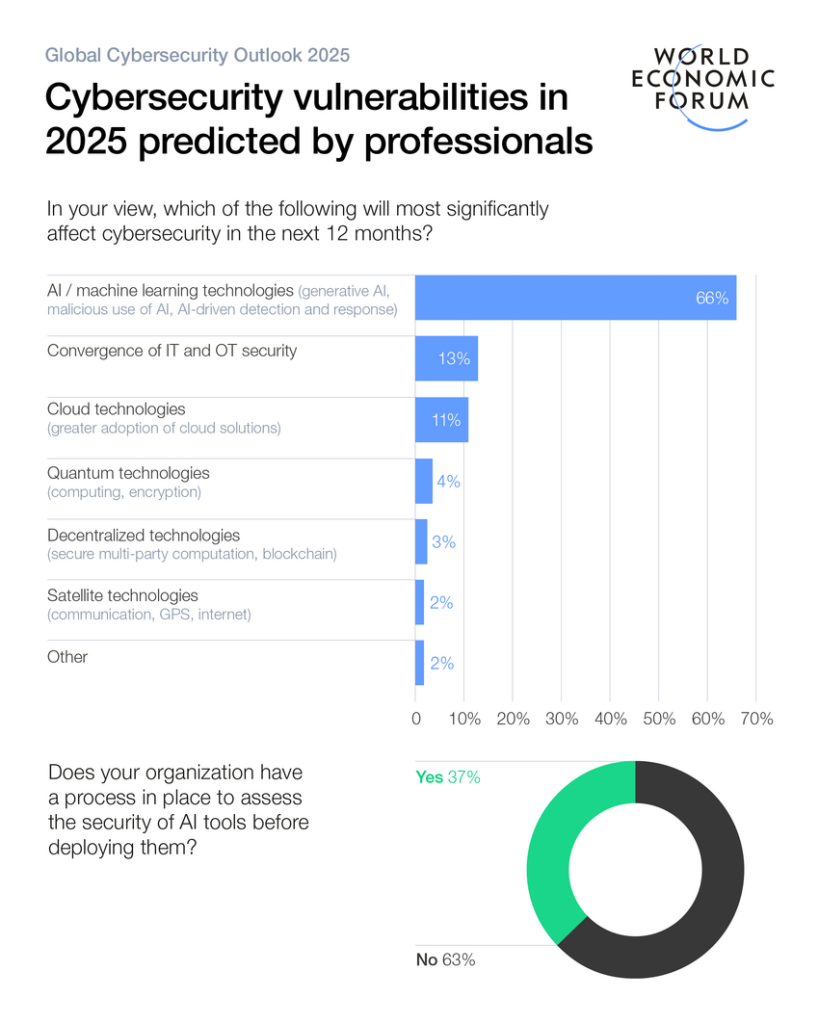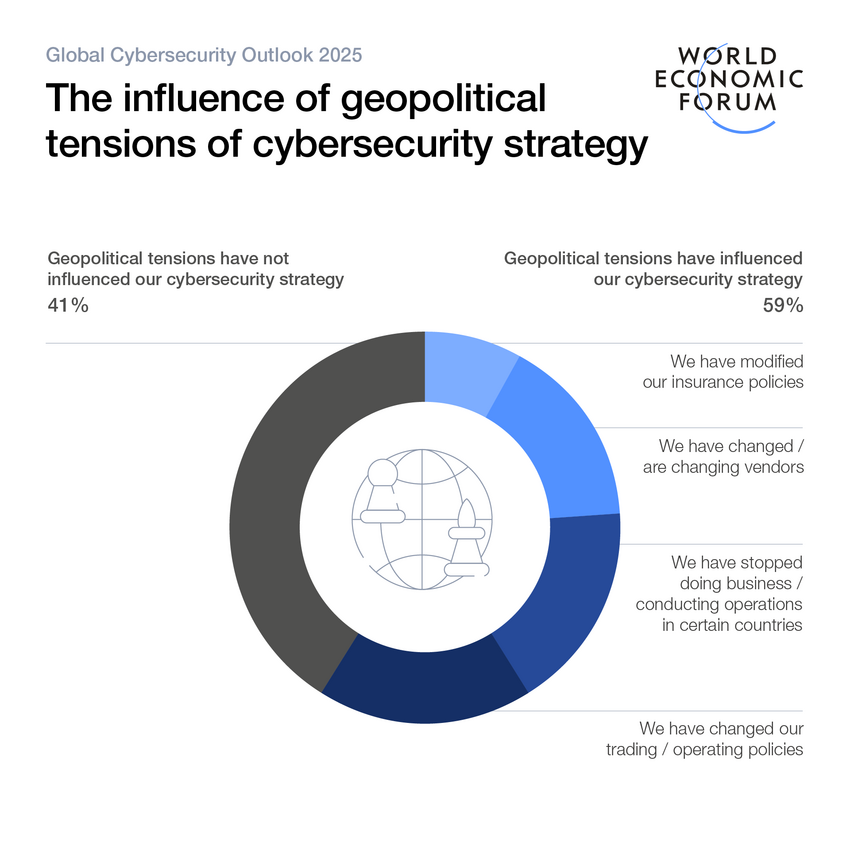A new report from the World Economic Forum underscores the escalating complexity of cyberspace, driven by geopolitical tensions, supply chain vulnerabilities, and rapid technological advancements. The report, Global Cybersecurity Outlook 2025, notes these challenges are creating profound disparities in cybersecurity resilience between organizations, industries, and regions.
A Complex and Evolving Cyber Landscape
The report highlights the compounded challenges facing organizations as they navigate the increasingly intricate cyber environment. Key drivers include geopolitical instability, dependency on complex supply chains, rapid adoption of emerging technologies, and growing regulatory demands. A widening cyber skills gap further exacerbates these issues, making effective risk management a herculean task.
The Role of Cyber Insurance in Cyber Resilience and Risk Management
Cyber insurance has emerged as a critical tool for managing escalating risks in the digital landscape, but it is not without its challenges. The report highlights that as 72% of organizations report increased cyber risks, insurance premiums and exclusions are rising in tandem with the sophistication of attacks. Additionally, the lack of standardized evaluation methods for cyber risks complicates the ability of insurers to accurately assess and price coverage. Organizations are increasingly turning to cyber insurance as a means of mitigating financial losses, yet many struggle to navigate the complexities of policies and exclusions, particularly in regions with fragmented regulatory frameworks. The report stresses the need for collaboration between the insurance industry, regulators, and businesses to ensure that policies evolve in step with the dynamic threat landscape, providing reliable safety nets for critical infrastructure and organizations of all sizes.

Cyber Inequity on the Rise
Cyber inequity remains a persistent issue. 35% of small organizations report inadequate cyber resilience, a stark increase from previous years. By contrast, the share of large organizations with similar concerns has nearly halved. Regionally, disparities are stark: while only 15% of respondents in North America and Europe express low confidence in their infrastructure’s cyber resilience, this figure surges to 42% in Latin America and 36% in Africa.
Public sector entities are disproportionately affected, with 38% reporting insufficient resilience. Talent shortages also compound these issues, as 49% of public-sector organizations lack the workforce to meet cybersecurity demands.
AI and Generative Technologies: A Double-Edged Sword
AI’s rapid adoption is both an opportunity and a threat. While 66% of organizations anticipate AI significantly impacting cybersecurity in the coming year, only 37% have security assessments for AI tools. The paradox of widespread AI deployment without adequate safeguards has amplified vulnerabilities, enabling cybercriminals to scale attacks through generative AI tools.

Supply Chain Risks Dominate
Supply chain vulnerabilities emerged as the most pressing ecosystem risk, with 54% of large organizations identifying them as the primary barrier to achieving cyber resilience. Third-party risks, software vulnerabilities, and lack of visibility into suppliers’ security measures compound the issue, making interconnected supply chains critical points of failure.
Geopolitical Tensions Shape Strategies
Nearly 60% of organizations have adjusted their cybersecurity strategies in response to geopolitical tensions. Key concerns include cyber espionage, intellectual property theft, and disruptions to operations. The interplay between nation-state actors and cybercriminals has blurred lines, escalating threats to critical infrastructure.

Regulations: A Double-Edged Sword
The growing proliferation of cybersecurity regulations has been instrumental in strengthening defenses but has introduced significant compliance burdens. 69% of organizations report that fragmented regulatory landscapes pose challenges, with differing standards complicating implementation across regions.
Critical Talent Shortages Persist
The cybersecurity skills gap has grown by 8% since 2024, with two-thirds of organizations reporting moderate-to-critical shortages. This deficit leaves many entities, especially small businesses and public-sector organizations, unable to adequately respond to threats.
Call to Action: Building Resilience
The Global Cybersecurity Outlook 2025 emphasizes the need for a security-first mindset to combat these challenges. Key recommendations include fostering public-private partnerships, standardizing global regulations, and investing in workforce development. By addressing the inequities and complexities in cyberspace, organizations can build resilience against the sophisticated and far-reaching threats of 2025.